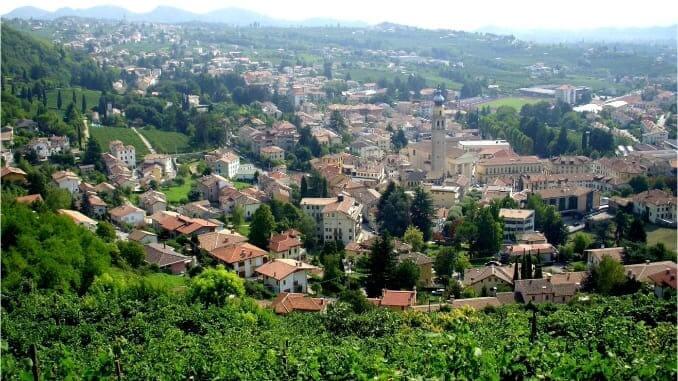Prosecco 101: Why This Oft-Dismissed Sparkling Wine Is Rising to New Heights
Photo courtesy of Kathleen Willcox
If you don’t love Prosecco, chances are, the person sitting next to you does. No one—even Italians!—drinks more of the fun fizz than Americans, with imports up a whopping 40% last year according to the Prosecco DOC. (Italians bought about 120 million bottles last year, while the U.S. imported 134 million).
At first glance, many see Prosecco as a less-expensive, less-elegant, definitely wilder cousin of Champagne, but there’s more to her if you’re willing to look deeper. Prosecco, while offering all the fun and fizz a coupe can contain, is becoming increasingly cerebral.
“Over the last decade, we’ve been keeping a keen eye on the region of Prosecco, one of the more polarizing wines that we place on our lists,” says Sam Bogue, beverage director of San Francisco’s Flour + Water Hospitality Group, which has Flour + Water, Penny Roma and others under its molto Italiano umbrella. “Key to our evolving understanding is taking into account the remarkably large footprint of the region, which leads to a massive variance in producer and terroir quality.”
As a general rule, Bogue says, the southern stretch of the Prosecco DOC near the Po River Valley produces “less interesting wines” with “heavy sugar additions.” The northern subzone of Valdobbiadene, with its poor, rocky, limestone-rich soils are where it’s at, he insists. Terroir is eternal, but the understanding of it can change slowly over time.
In 2009, when the Italian government officially promoted Prosecco’s quality designation from Indicazione Geografica Tipica (IGT) to Denominazione di Origine Controllata (DOC), the perception of the classic party drink slowly began shifting. IGT and DOC are part of the Italian wine classification system, which was launched in the 1960s. IGT is a tier above Vino da Tavola, or table wine. Italian IGTs are based on geographical areas and include a range of quality and prices, and currently, there are more than 120. DOCs are based on geographical areas, and wines with the DOC label have undergone analysis and third-party quality tests. With DOCs, regulations dictating the varieties of grapes that can be grown and how they can be grown are stricter than they are with IGTs. There are more than 330 DOCs in Italy.
While Prosecco, a longtime, much-beloved party animal, still knows how to rock out, she has a serious side too. Read on for a 360-degree view of this intriguing wine and how the region is evolving.
-

-

-

-

-

-

-

-

-

-

-

-

-

-

-

-

-

-

-

-

-

-

-

-

-

-

-

-

-

-

-

-

-

-

-

-

-

-

-

-








































